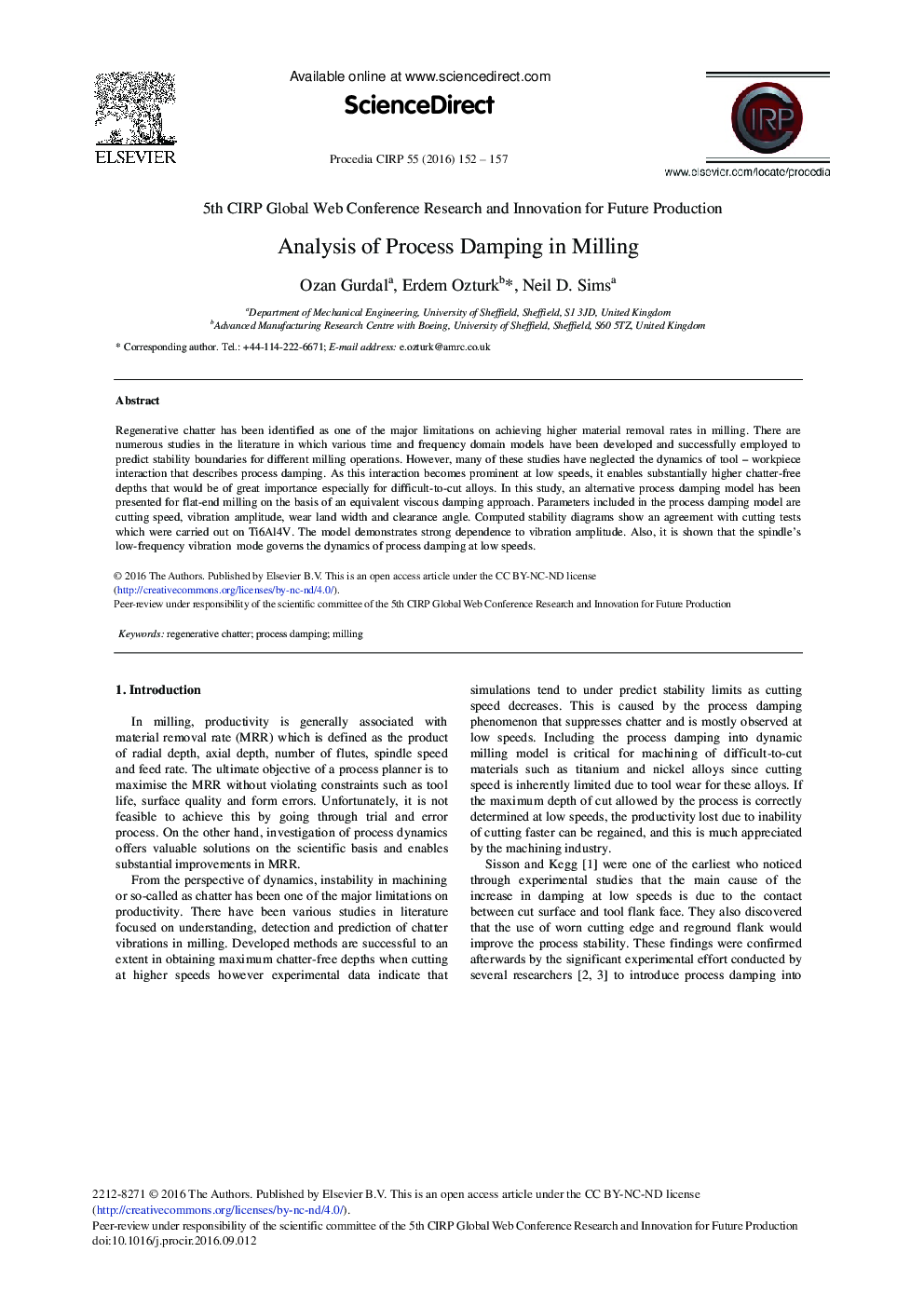| Article ID | Journal | Published Year | Pages | File Type |
|---|---|---|---|---|
| 5470033 | Procedia CIRP | 2016 | 6 Pages |
Abstract
Regenerative chatter has been identified as one of the major limitations on achieving higher material removal rates in milling. There are numerous studies in the literature in which various time and frequency domain models have been developed and successfully employed to predict stability boundaries for different milling operations. However, many of these studies have neglected the dynamics of tool - workpiece interaction that describes process damping. As this interaction becomes prominent at low speeds, it enables substantially higher chatter-free depths that would be of great importance especially for difficult-to-cut alloys. In this study, an alternative process damping model has been presented for flat-end milling on the basis of an equivalent viscous damping approach. Parameters included in the process damping model are cutting speed, vibration amplitude, wear land width and clearance angle. Computed stability diagrams show an agreement with cutting tests which were carried out on Ti6Al4Â V. The model demonstrates strong dependence to vibration amplitude. Also, it is shown that the spindle's low-frequency vibration mode governs the dynamics of process damping at low speeds.
Related Topics
Physical Sciences and Engineering
Engineering
Industrial and Manufacturing Engineering
Authors
Ozan Gurdal, Erdem Ozturk, Neil D. Sims,
